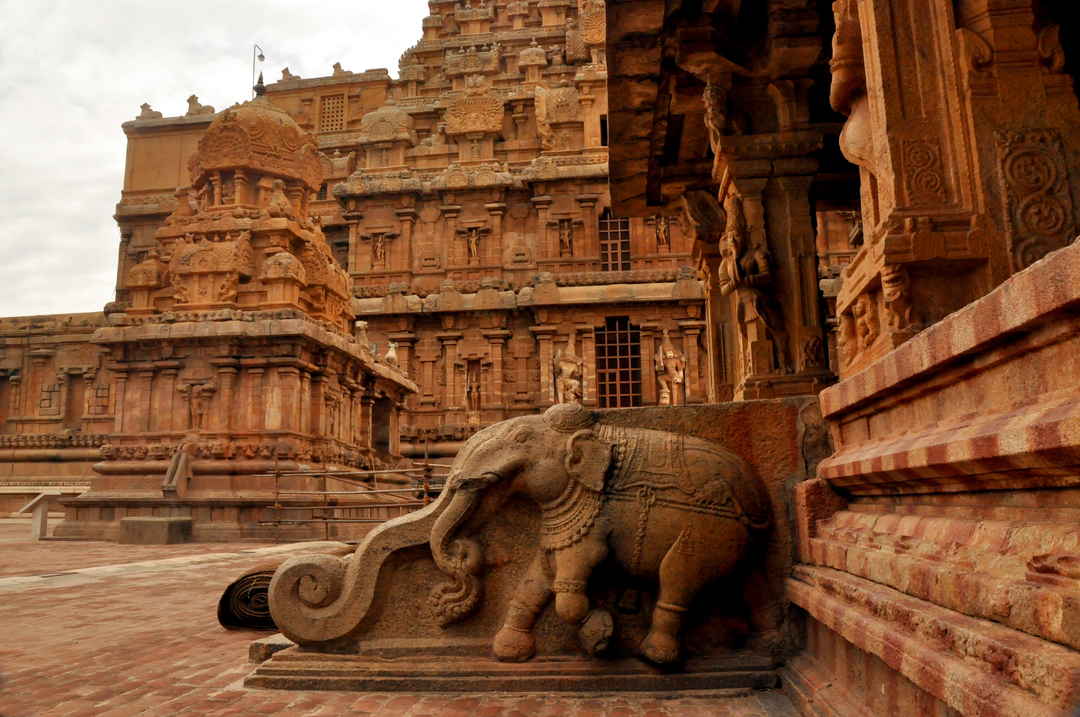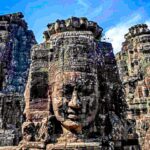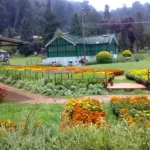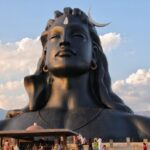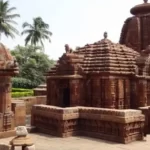India is known for its beautiful temples peaceful places of worship as well as important religious and historical monuments. For devotees and anyone interested in history and architecture, these ancient, intricately designed, and meticulously maintained places of worship are a must. Here are the 12 largest Indian temples:
Srirangam Temple
The Srirangam Temple in Tamil Nadu covers 156 acres and has a perimeter of 4,116 meters, making it the largest temple in India and one of the largest religious complexes in the world. The temple is surrounded by seven concentric walls with a total length of 32,592 feet or more than six miles. These walls are surrounded by 21 Gopurams. The Ranganathanswamy temple complex, which contains 49 shrines dedicated to Lord Vishnu, is so large that it could be considered a city in itself. However, the whole temple is not used for religious purposes.
Chhatarpur Temple
Baba Sant Nagpal Ji, who passed away in 1998, founded the Chhatarpur temple in 1974. Within the temple complex, his samadhi shrine is located in the Shiv-Gauri Nageshwar Mandir. Before the construction of the Akshardham Temple in Delhi in 2005, this temple was one of the largest temples in India. It was also the second largest temple in the world. This temple is entirely made of marble and has jaali (perforated stone or grid) work on all its facets. It belongs to the Vesara architectural style.
Akshardham
Akshardham is a Hindu temple complex in the Indian capital city of Delhi. Also known as Delhi Akshardham or Swaminarayan Akshardham, the complex exhibits centuries of traditional Indian and Hindu culture, spirituality, and architecture. Pramukh Swami Maharaj, the spiritual head of Bochasanwasi Shri Akshar Purushottam Swaminarayan Sanstha, inspired and supervised the construction of the Akshardham, which was built with the help of 3,000 volunteers and 7,000 artisans.
Ramakrishna Math
Ramakrishna Math and Mission, founded by Swami Vivekananda, the chief disciple of Ramakrishna Paramahamsa, has its headquarters at Belr Mah or Belur Mutt. It is one of the most important institutions of Calcutta, located on the west bank of the Hooghly River in Belur, West Bengal, India. The Ramakrishna movement is centered in this temple. The architecture of the temple is notable for its fusion of Hindu, Christian, and Islamic motifs as a symbol of the unity of all religions.
Thillai Nataraja Temple
Chidambaram Thillai Natarajar-Koothan Kovil, also known as Chidambaram Temple, is a Hindu temple dedicated to Lord Shiva in Chidambaram, Tamil Nadu, in east-central South India. Chidambaram is a 40-acre (160,000 m2) temple complex in the heart of the city. It is one of the largest temples in India that is used exclusively for religious purposes. The main complex of Lord Shiva Nataraja also includes shrines of Sivakami Amman, Ganesh, Murugan, and Vishnu in the form of Govindaraja Perumal.
Brihadeeswarar Temple
Brihadeeswarar Temple, also known as the Great Temple, was dedicated to Shiva and built by Raja Raja Chola I in 1010 CE. The great temple with its majestic vimana, statues, architecture, and frescoes is not only a magnificent structure but also contains the richness and variety of Tamil inscriptions carved in stone in exquisite calligraphy. The temple was designated as a UNESCO World Heritage Site. Given the amount of stone and earth that had to be moved and the lack of power machinery available at the time, one might wonder how such a large temple could have been built in such a short time.
Annamalaiyar Temple
Annamalaiyar Temple, dedicated to Lord Shiva, is one of the largest Indian temples in the world. It has four majestic towers on each of its four sides and four high stone walls that resemble fortifications. Rajagopuram is the 11-story tallest eastern tower. The fortified walls, pierced by four gopura entrances, give this vast complex an imposing appearance.
Dakshineswar Kali Temple
The Dakshineswar Kali Temple is located in the suburbs of Kolkata on the east bank of the Hooghly River (a tributary of the Ganga River). Bhavatarini, an aspect of the goddess Kali, is the presiding deity of the temple and her name means “She who liberates her devotees from the ocean of existence i.e. Sasra.” Rani Rashmoni, a philanthropist and devotee of Kali, built the temple in 1855. The temple complex covers 25 acres ( 101,171 m2), making it one of the largest temples in Bengal.
Rajagopalaswamy Temple
In Mannargudi, Tamil Nadu, India, Rajagopalaswamy Temple is a Vaishnavite shrine. The tower of the Front Temple rises to a height of 156 feet. Rajagopalaswamy, a form of Lord Krishna, is the presiding deity. The temple is spread over 23 acres and the temple tank, known as Haridra Nadhi, is 1,158 feet long and 837 feet wide. It is one of the most important Vaishnava shrines in India. Hindus refer to the temple as Dakshina Dwarka (Southern Dwarka) and Guruvayoor. The temple is also 23 acres and the Haridra Nadhi temple tank is also 23 acres, making it one of the largest temple tanks in India.
Ekambareswarar Temple
Ekambareswarar Temple is a Hindu temple in Kanchipuram, Tamil Nadu, India, dedicated to Lord Shiva. It is one of the largest Indian temples built for Lord Shiva or Pancha Bootha Sthalams, which represents the element of Earth.
Vadakkumnathan Temple
The Vadakkumnathan Temple is an ancient Hindu temple in Thrissur, Kerala, India, dedicated to Shiva. Thekkinkadu Maidan, where the Vadakkunnathan Temple is located, is spread over 65 acres.
Varadharaja Perumal Temple
Lord Vishnu is worshiped at the Varadharaja Perumal Temple located in Kanchipuram, Tamil Nadu, India. It is one of the 108 Vishnu temples known as Divya Desams which are said to have been visited by 12 poet saints known as Alwars. It is located in the Vishnu district of Kanchi Kanchipuram which is home to several famous temples of Lord Shri Vishnu. Ramanuja is said to have lived in this temple and was one of the greatest Hindu scholars of the Vaishnava VisishtAdvaita philosophy.
